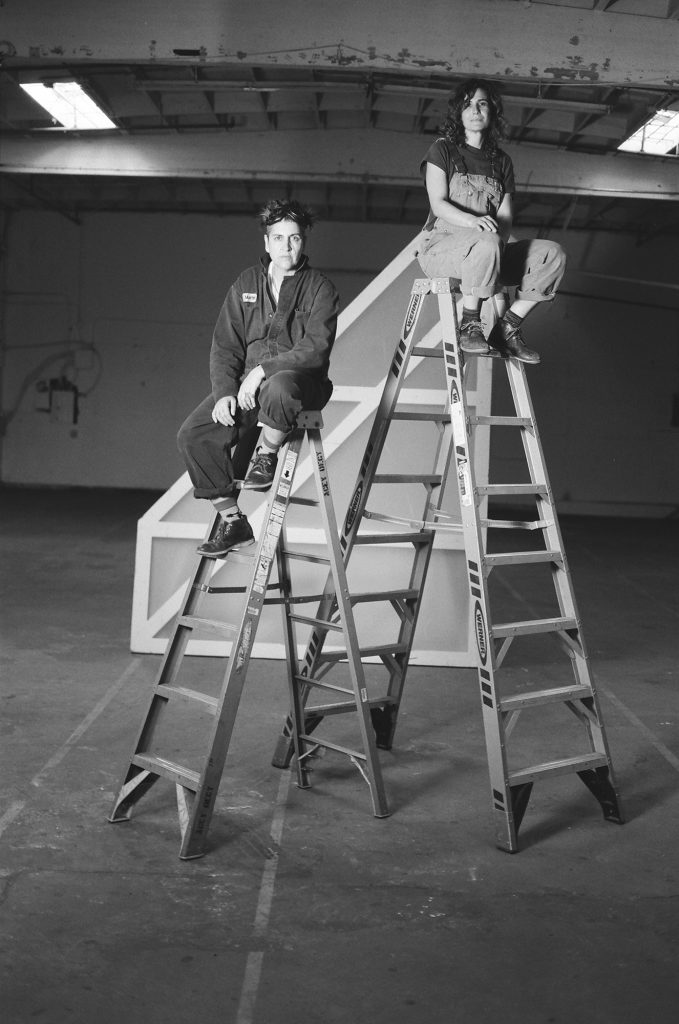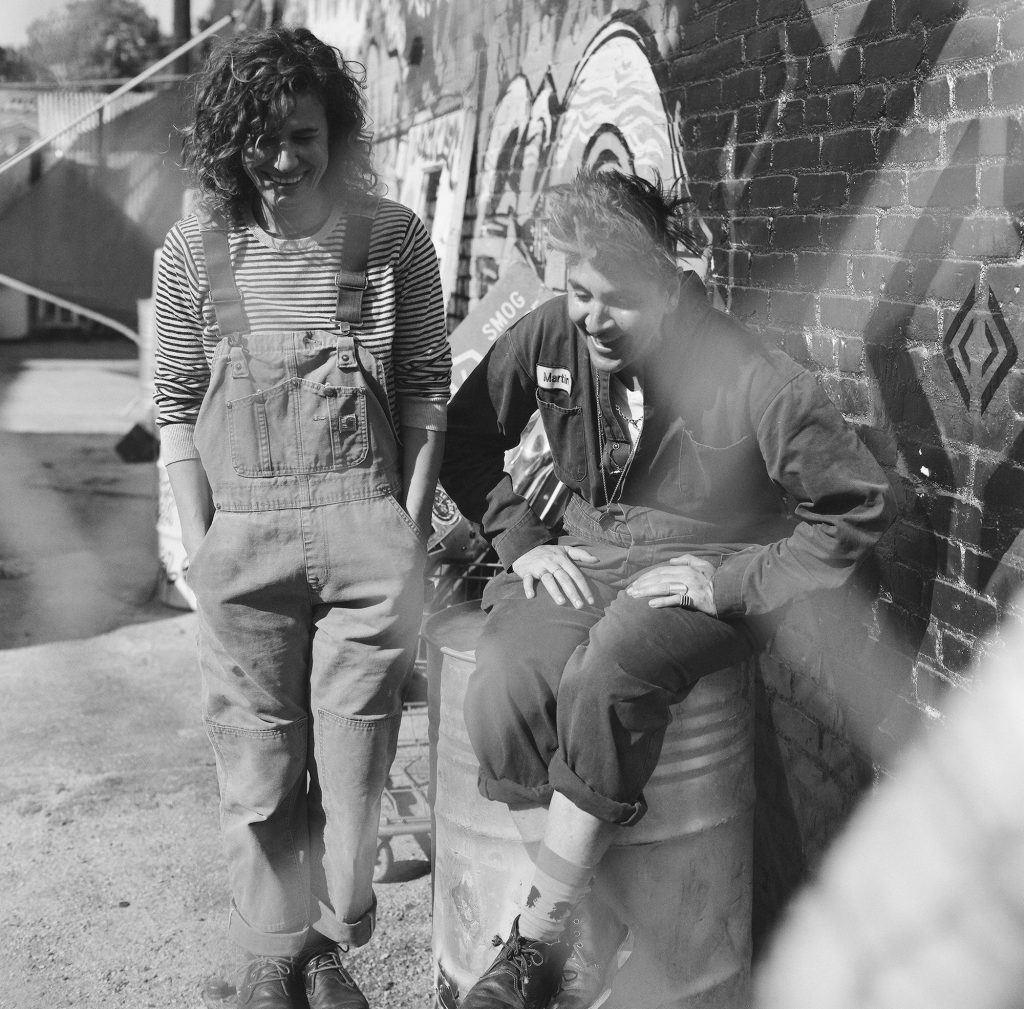Business owners Jen and Leila have been best friends for over twenty years, and the familiarity of their friendship and partnership underlies the dynamic current of filmmakers, painters, singers, photographers, classical musicians, lighting technicians, dancers, and whichever artist needs the blank canvas reimagined to suit their visions. In the two years since they went into business together, they have sought to navigate the language of the personal and professional within the given space. The balance clearly shows in their camaraderie, warmth, and the ability to then hone their focus into the task at hand.
Skylights of the original structure stream natural light into Pony 1, the main stage of three, which the two women share their office and run the studios—Pony 1, Pony 2, Little Pony, plus the outdoor graffiti lot—in addition to the myriad creative endeavors unfolding through the spaces. When they acquired the building, they wanted to maintain the harmony and sanctity of character rather than installing another white-washed, empty studio. Leila describes mining for the golden opportunities layered within Electric Pony, “chipping away” at all the areas which might provide “treasures” to give a range of depth and textures to the artists. She runs her hand across the massive fire door between the two main stages. “This,” she explains, “is the history of the building.”

In their relationship to the space, the two maintain the essence of their exploration with respect to what is already there. As they began to strip the stark paint covering the door when they moved in, a multitude of colors revealed themselves layered down to the initial material. In this process, they created a functioning artwork hewn in various depths, unearthing the textures of a universal canvas. Red, copper, silver, white, and surprising, vivid details in the ancient remains, where previous tenants added layers over the near century of its lifespan, were brought out of their encasement. Contingent with the ethos of Electric Pony, the surprise of such characteristics distinguishes the studios.
Since establishing the studio two years ago, they have worked hard to provide a reliable yet continuously reimagined space.
Jen comes from years in the production world, and can empathize with the disappointment of being told ‘no’—so they endeavor to accommodate with sensibility. Sometimes the sanctity of the space must be prioritized. “We’ve had people walk in here with oil drums and a stack of wood,” she explains, adding that a fair few have wanted to set off fireworks inside, which draws the line at ‘no.’ But they mitigate the hardlines with the philosophy that “sometimes you have to dig a little to find the answers.” Finding out how to make things possible is integral to their work—solutioning, for example, to light things on fire in the lot outside instead.
Trying different things has been a part of both women’s paths here.
“I’m grateful that I didn’t know what I wanted to be,” asserts Leila, detailing the numerous jobs and experiences she had before she was led to running studio spaces.
“I just wanted to get out of my town,” laughs Jen.
Life moves us in a creative direction to engage with others in specific spaces, or toward new experiences in new spaces. The two women met as young creatives in New York City, and have come into the owning and running of Electric Pony Studios in their own eclectic ways. They appreciate the sincere dedication and moving parts required to realize the projects that come their way, and the profound nature of space which invites the creation of anything. They have found stunning moments of alignment: a crew member with perfect insight for at an opportune time, a Bollywood music video creating a tie to collaborating artists in India, an all-night shoot culminating in a violinist playing the dark—an extraordinary experience to witness.
Jen says she enjoys being caught off-guard and not knowing what might happen. She maintains the ability to accommodate this flexibility and “yes oriented” nature of the studio through diligence: “Logistically, you have to be on top of things; we are really well-organized with our business.”
Leila expands: “We are so conscious of the fact that it is difficult to make content, to then get the budget, get everyone together on the same day. It’s a gift. When people come through the door, [we know] it was hard for them to get to this point.”
Too many studios are pawing for the credit card, leaving the keys, and commanding the clients to empty their own trash. Electric Pony strives for both personable interactions in an environment that feels like home, and the ‘space’ to create in every sense of the word. They express the earnest will to provide room to be productive, to give everything the client needs—and beyond. Describing ideal days, both describe the joy of interacting with people along with taking the time to reflect in their own company. Leila and Jen are explorers and providers, engaging the multi-dimensions of creative space.
- Written by Virginia Rand
- 120 film photography by Adam Hutsell
- First published in [ Issue 5 ]

